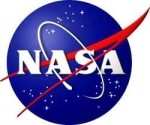Wed, Nov 10, 2010
Goal Is To Evaluate Potential New Systems, Concepts, And
Technologies
 NASA has selected 13 companies for negotiations leading to
potential contract awards to conduct systems analysis and trade
studies for evaluating heavy-lift launch vehicle system concepts,
propulsion technologies, and affordability.
NASA has selected 13 companies for negotiations leading to
potential contract awards to conduct systems analysis and trade
studies for evaluating heavy-lift launch vehicle system concepts,
propulsion technologies, and affordability.
The awards total approximately $7.5 million with a maximum
individual contract award of $625,000. Each company will provide a
final report to help lay the groundwork for the transportation
system that could launch humans to multiple destinations, including
asteroids, Lagrange points, the moon and Mars.
The selected companies are:
- Aerojet General Corp., Rancho Cordova, CA.
- Analytical Mechanics Associates, Huntsville, AL.
- Andrews Space, Tukwila, WA.
- Alliant Techsystems, Huntsville, AL.
- The Boeing Co., Huntsville, AL.
- Lockheed Martin Corp., Huntsville, AL.
- Northrop Grumman Systems Corp., Huntsville, AL.
- Orbital Sciences Corp., Chandler, AZ.
- Pratt & Whitney Rocketdyne, Canoga Park, CA.
- Science Applications International Corp., Huntsville, AL.
- Space Exploration Technologies Corp., Hawthorne, CA.
- United Launch Alliance, Centennial, CO.
- United Space Alliance, Huntsville, AL.
"These trade studies will provide a look at innovative launch
vehicle concepts, propulsion technologies, and processes that
should make human exploration missions more affordable," said Doug
Cooke, associate administrator of NASA's Exploration Systems
Mission Directorate at the agency's Headquarters in Washington. "If
we are to travel beyond low-Earth orbit, industry's collaboration
is essential to reduce the cost associated with our future
exploration goals and approaches and make the heavy-lift vehicle
affordable to build and fly."
The studies will include heritage systems from shuttle and Ares,
as well as alternative architectures and identify propulsion
technology gaps including main propulsion elements, propellant
tanks and rocket health management systems. The reports will
include assessments of various heavy-lift launch vehicle and
in-space vehicle that use different propulsion combinations. The
companies will examine how these combinations can be employed to
meet multiple mission objectives.
NASA will use the recommendations to evaluate heavy-lift launch
vehicle concepts and propulsion technologies for affordability that
will be required to enable robust and sustainable future
exploration missions.
More News
Ultrahigh Frequency (UHF) The frequency band between 300 and 3,000 MHz. The bank of radio frequencies used for military air/ground voice communications. In some instances this may >[...]
During The 7 Second Descent, There Was Another TAWS Alert At Which Time The Engine Remained At Full Power On October 24, 2025 at 2115 mountain daylight time, a Cirrus SR22T, N740TS>[...]
From 2009 (YouTube Edition): Educational Organization Aims to Inspire by Sharing Tuskegee Story Founding leader Don Hinz summarized the Red Tail Project’s mission in simple, >[...]
“This feels like an important step since space travel for people with disabilities is still in its very early days... I’m so thankful and hope it inspires a change in m>[...]
Also: New Katanas, Kern County FD Training, IndiGo’s Botched Roster, MGen. Leavitt Named ERAU Dean The Australian Transportation Safety Bureau (ATSB) has wrapped up its inves>[...]
 ANN's Daily Aero-Term (12.19.25): Ultrahigh Frequency (UHF)
ANN's Daily Aero-Term (12.19.25): Ultrahigh Frequency (UHF) NTSB Prelim: Cirrus Design Corp SR22T
NTSB Prelim: Cirrus Design Corp SR22T Classic Aero-TV: The Red Tail Project--Carrying the Torch of the Tuskegee Airmen
Classic Aero-TV: The Red Tail Project--Carrying the Torch of the Tuskegee Airmen Aero-News: Quote of the Day (12.19.25)
Aero-News: Quote of the Day (12.19.25) Airborne 12.17.25: Skydiver Hooks Tail, Cooper Rotax Mount, NTSB v NDAA
Airborne 12.17.25: Skydiver Hooks Tail, Cooper Rotax Mount, NTSB v NDAA



